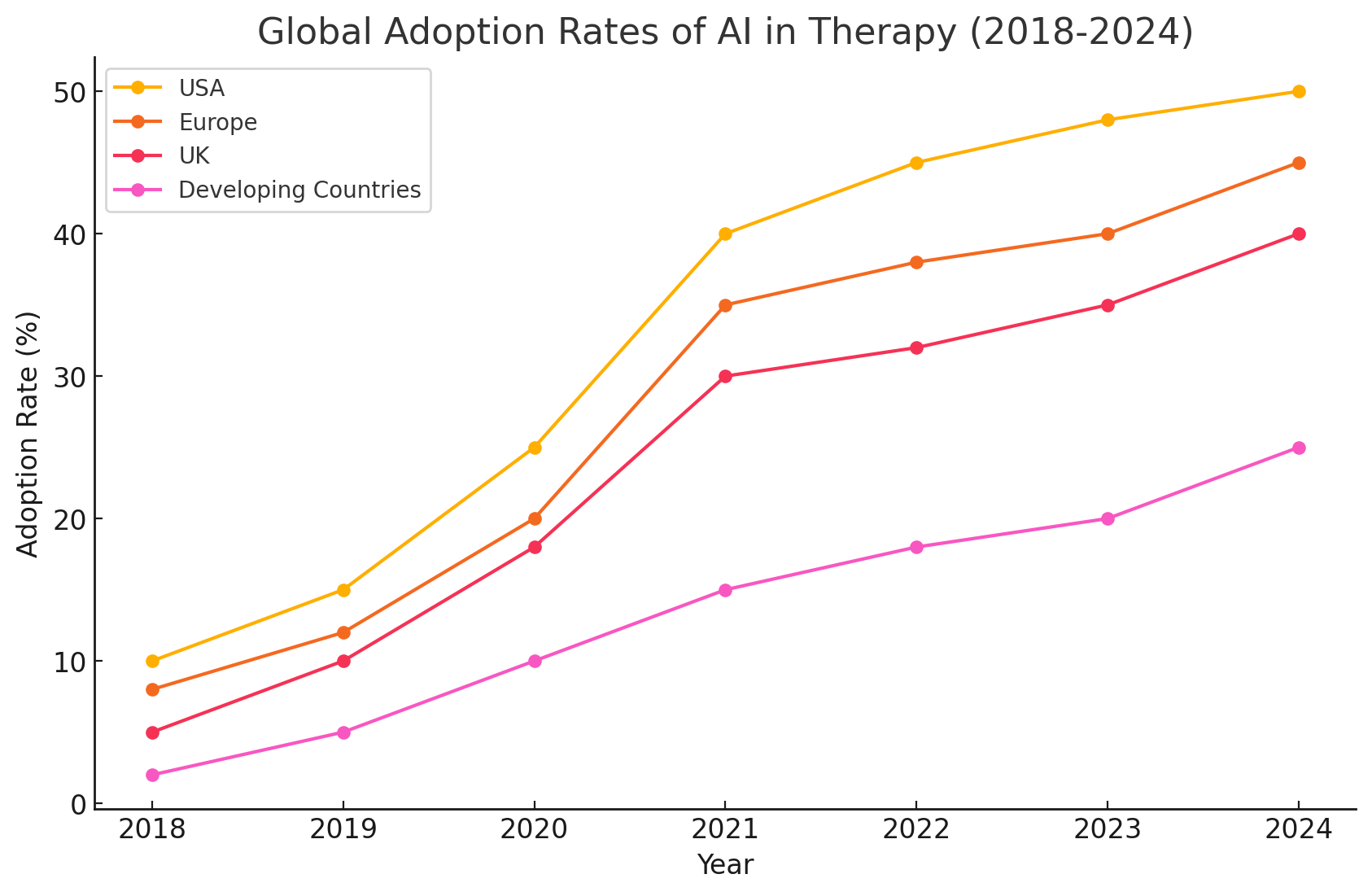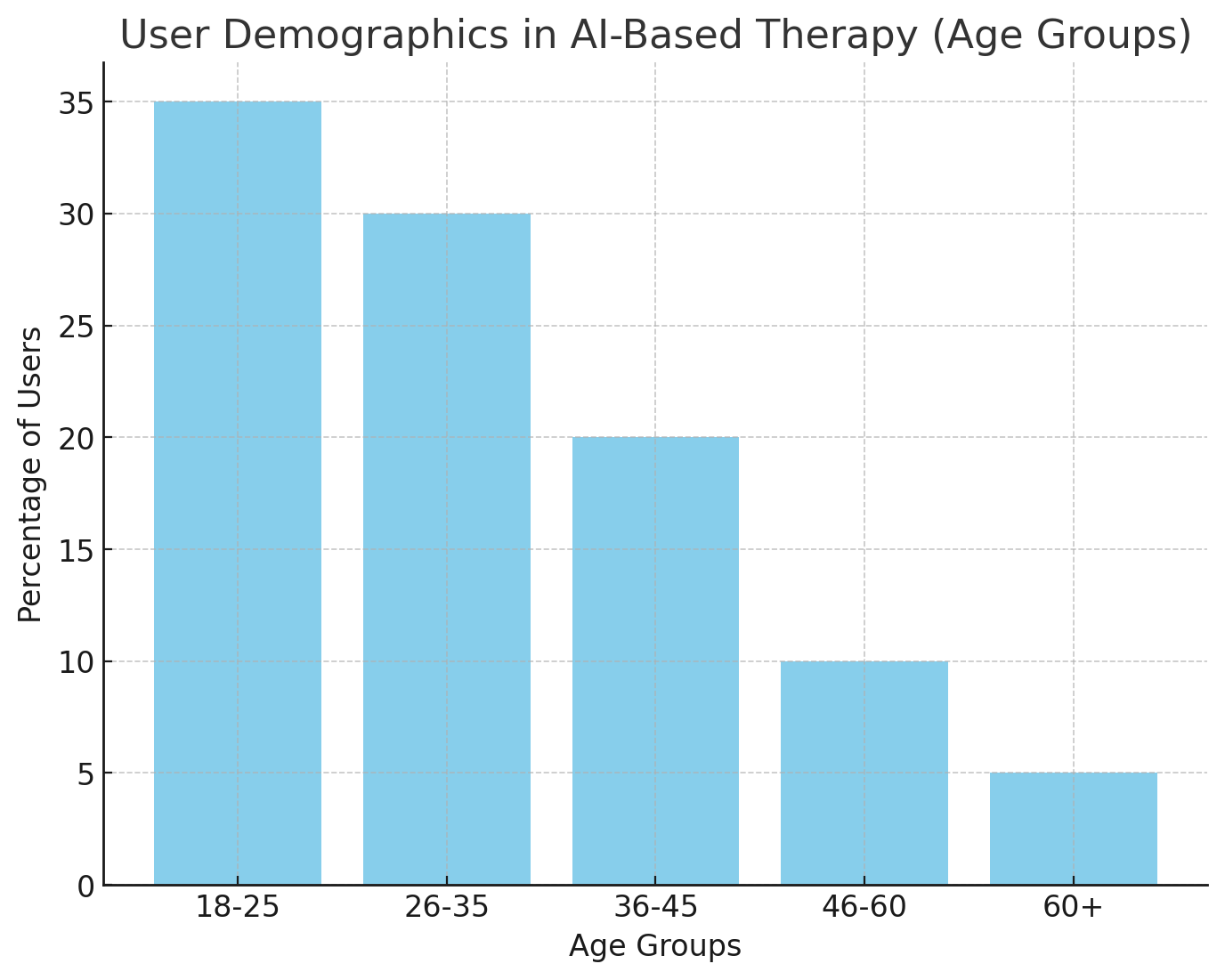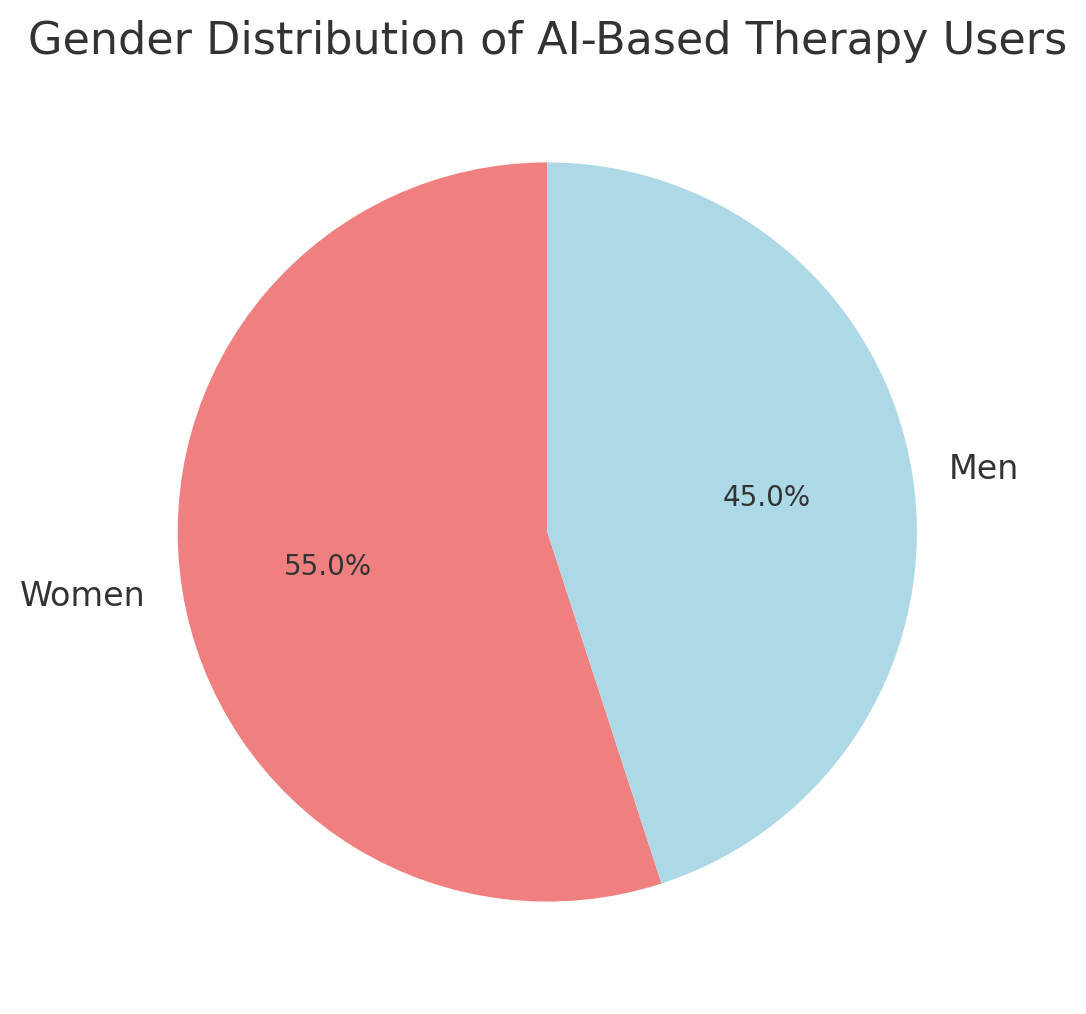What is AI in mental health care?
AI in mental health care refers to the use of artificial intelligence technologies to enhance the delivery of mental health services, including therapy, support, and analytics.

Published Date: 2024-12-27
Author: Talk Therapy Team
The integration of AI into mental health care is revolutionizing the way therapy is delivered. From instant support through chatbots to advanced analytics for therapists, AI tools are making therapy more accessible, efficient, and personalized. This article examines global trends, user demographics, and regional adoption rates, backed by scientific insights and data-driven visualizations.
Here are three visualizations showcasing global trends and demographics related to AI in therapy:
A line graph comparing adoption rates across the USA, Europe, UK, and developing countries. This visualization illustrates the steady increase in AI adoption in therapy platforms over the years.

A bar chart showing the distribution of users by age group. This data highlights that the majority of users are young adults, indicating a shift in how younger generations are seeking mental health support.

A pie chart illustrating the gender split among AI-based therapy users. This visualization shows that women are slightly more represented in the usage of AI therapy platforms.

AI-powered platforms are making mental health support available to underserved populations, especially in rural and developing areas. This is crucial for ensuring that everyone has access to the help they need.
By automating administrative tasks and providing instant support, AI tools reduce the overall cost of mental health care. This can lead to more affordable options for clients and less strain on therapists.
Rather than replacing therapists, AI complements their work, enabling more personalized and data-informed interventions. This collaboration can enhance the therapeutic process and improve outcomes for clients.
Experts predict a 25% annual growth in the AI-based therapy market, with a projected valuation of $69.7 billion by 2032 (Zion Market Research). This growth indicates a strong future for AI in mental health care.
As AI continues to reshape mental health care, now is the time to embrace this transformative technology. Join Talk Therapy to explore how AI can enhance your practice and provide clients with unparalleled support. Sign up here to be part of the future of mental health care.
AI in mental health care refers to the use of artificial intelligence technologies to enhance the delivery of mental health services, including therapy, support, and analytics.
AI is used in therapy through chatbots for instant support, data analysis for therapists, and personalized treatment plans based on user data.
Benefits include increased accessibility to mental health support, reduced costs, improved efficiency for therapists, and enhanced personalization of care.
AI-based therapy tools are most popular among individuals aged 18-35, with a higher usage rate among women (55%) compared to men (45%).
Experts predict a 25% annual growth in the AI-based therapy market, with a projected valuation of $69.7 billion by 2032, indicating a strong future for AI in mental health care.